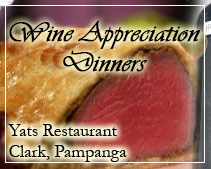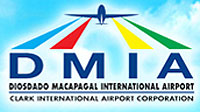Value and diversity in Argentina’s wines
April 6, 2011
Argentina has been making wine since Spanish missionaries brought vine cuttings to the South American country more than 400 years ago. Through the centuries, the wine industry has steadily evolved to quench the growing demand of both the Argentine people and wine consumers around the world.
However, until the early 1970s, most of the wine produced was rustic in nature and intended mostly for domestic use. The wine landscape changed dramatically during the last decade of the 20th century, when the wine industry turned to an old standby, malbec, a grape varietal of French origin that was brought to the country in the mid- 1800s.
The rising popularity of malbec on the international wine stage, combined with a stable government and rebounding economy, was just what the Argentine wine industry needed to jump-start their exports.
This permitted wine producers to begin to invest in modern winemaking equipment and bring some of the top winemaking consultants in the world to Argentina. As demand for Argentinean wines began to increase, producers expanded their plantings beyond the traditional torrontes riojano and pedro gimenez to include syrah, merlot, cabernet sauvignon, chardonnay, pinot gris, riesling and sauvignon blanc. But it is malbec that continues to be Argentina’s wine mascot, particularly in the United States.
Today, Argentina has emerged as one of the most diverse wine-producing countries in the world, making affordable wines based on both old and new world techniques, with more than 600,000 acres of land planted to vineyards and more than 1,500 wineries producing almost 500 million gallons of wine per year. The Mendoza region, located in the center of the country, is the most prominent wine-growing area, producing more than half of Argentina’s wine. Located just to the north of Mendoza are the regions of San Juan and La Rioja, where hotter, drier weather caters to spicier red wines. As Argentina’s wine industry expands, many other fertile areas of the country continue to be explored and developed annually. Retail prices are approximate.
The 2009 La Linda Unoaked Chardonnay from Mendoza ($11) is a refreshing break from the over-oaked club. Fermented and aged in stainless steel tanks, this wine features bright scents of green apple and white peach that are repeated on the palate where they are joined by flavors of pear and nectarine.
The 2009 Aymara Torrontes from Mendoza ($12) takes its name from the Aymara people who inhabited the Cafayate region of Argentina long before the Inca civilization. This aromatic white wine has a floral bouquet of white peach and acacia on the nose. The mouthwatering acidity keeps the flavors of peach, pear and papaya balanced between fruity and dry. The finish is long and persistent, with just a touch of orange blossom at the end.
Cabernet sauvignon is beginning to find its voice in Argentina and the 2008 Bodega Catena Zapata Cabernet Sauvignon from Mendoza ($15) is singing the right song for the money. Remarkably smooth and elegant, it offers a mouthful of flavors toward the blackberry end of the spectrum, with notes of dark plum and cassis in supporting roles.
Of course, malbec is the peg upon which Argentina’s wine industry hangs its hat, and a very good example of that varietal is the 2008 Bodega Septima Malbec from Mendoza ($12). The bouquet offers up scents of blackberry and dried herbs while the palate features flavors of black plum, dark cherry and cocoa.
For a special treat, try the 2008 Bodega Septima Gran Reserva from the prominent region of Agrelo, in Mendoza ($23). This blend of malbec, cabernet sauvignon and tannat is powerful yet elegant with layers of black fruit, raspberry, licorice and warm dark chocolate on the palate.
The smooth finish is balanced and lengthy, with just a touch of dark fig at the end.
Source: http://washingtonexaminer.com/entertainment/2011/02/value-and-diversity-argentinas-wines
Manila residents and tourists spending a vacation in Philippines prefer to travel out of town from Manila to the north to visit Subic, Pampanga, Angeles City and Clark Philippines. While many areas of the Philippines are plagued by crime and security concerns, Clark continues to impress the travel and tourism observers with its immaculately low crime records. Other features of Clark that attract family tourists and those visitors that are health sensitive include low pollution, peace and quiet ambiance and a most welcome absence of traffic congestion.
Many are selling off their assets to start a new life in Philippines, taking advantage of the standard-of-living differential to start a business or just enjoy living in a tropical country. With careful planning, the move to Philippines can work out brilliantly or it can be a painful mistake.
This web site contains articles and information that will be helpful to visitors, residents and tourists traveling out of town from Manila on a short getaway to Subic, Angeles City, Pampanga and Clark Philippines. There are several web sites that contain information that might also be pertinent to what is happening in North Luzon.
For assistance with organizing and planning weddings and garden receptions, log on to http://www.PhilippinesWeddingVenue.com
For assistance with lodgings, accommodations, hotels and resorts near Manila in Subic, Pampanga, Angels City and Clark Philippines log on to http://www.HotelClarkPhilippines.com
While in Clark, one might as well add to the itinerary a visit to the famous Clark Wine Center, the largest wine shop in Philippines which offers over 2000 selections of fine vintage wine from all wine regions, vintages spanning over 50 years covering all price ranges.
http://www.ClarkWineCenter.com
If this article about Clark is useful to you, please click here to contact us to tell us what more you wish to know about this article or Clark Philippines, which can be something about Clark investment, about Clark resorts, about Clark Swimming and Leisure or simply general news about Clark.
Please send questions to Editor@ClarkPhilippines.com. Leave your name, email address, contact numbers and we will get back to you as soon as possible. Information received will not be disclosed.













